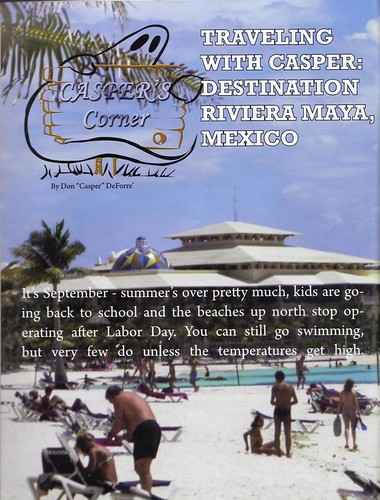I'd start by looking at the local tide chart if you plan on wet sand or water hunting. I usually start about 2 hours before a good low tide and hunt till about 2 hours after to make best use of the low. At other hours and at an unknown or unfamiliar beach, I start with a zigzag pattern from in the surf to the blanket line, or even seawall. After a few dozen passes, you get a feel for where the most "treasures" are found. I then work parallel to the water and hunt just that zone with a more grid like pattern. I generally don't overlap my swings unless there are lots of good targets. I want to keep "virgin" sand under my coil at all times considering that there's usually no way to cover the whole beach in one hunt. I just would rather cover more unsearched ground than search sand I've already searched by overlapping. Like I mentioned, this is based on a huge beach with few targets. I hit a hot spot, and I'm going to grid it to death. It's a numbers game, the more ground you cover, the more targets recovered as a general rule. With your Equinox, I like to use Park 1 in the dry sand. Beach ! works good too, but, I seem to go deeper in Park for whatever reason. In the wet sand, sometimes you can still use Park or Beach !, but, if it's chatty and unstable, go to Beach 2, which will probably be the only mode that will work good in the water. If bottle caps are everywhere and sounding good, adjust the Iron Bias to F2 @ 6 to make them sound worse and help I.D. them. I use 50 tone and horseshoe on to get the best audio discrimination, but, that's a matter of personal choice. It gives me the most information about the target. I generally dig anything non-ferrous anyway, so, not a big deal, but, I like to get totally in tune with the machine to know what the target is before I dig it. Iffy tones (especially deep ones) get dug, even if they're a one way tone when X'ing the target. Unless the beach is a total junk pile, I run the Recovery speed at 3 in the dry. I run it at 6-8 around the fire rings and other trashy areas, and as low as I can in the surf without it falsing. The lower the number, the more depth you will get, but, you need to slow down your swing a bit. In the water, that isn't an issue, as you can't swing the coil fast enough the present a problem with missed targets.




